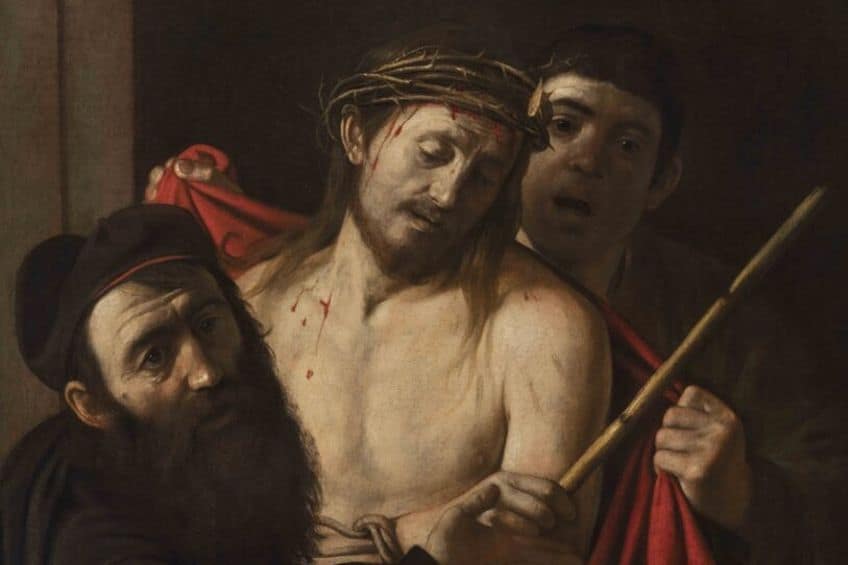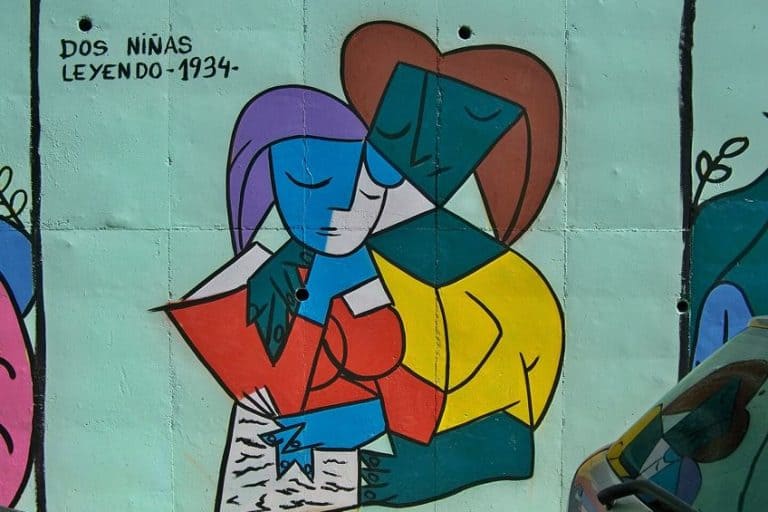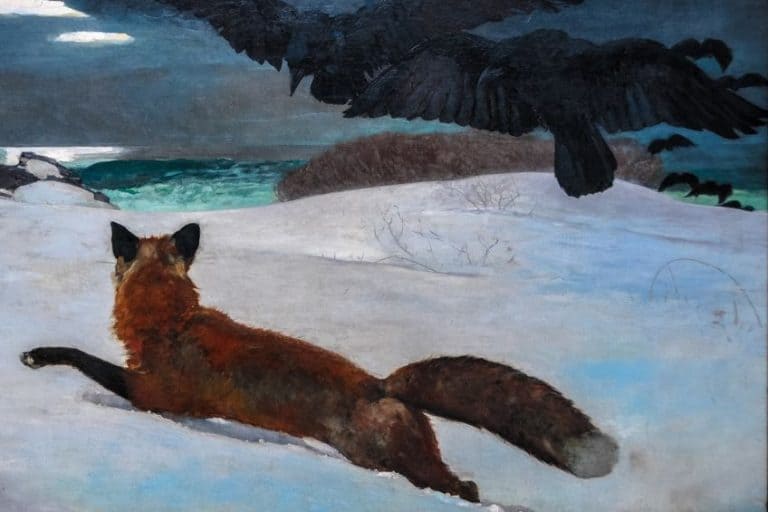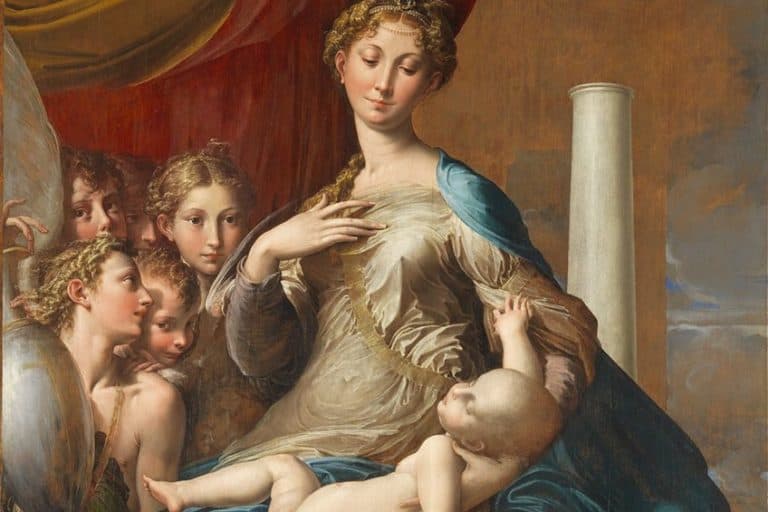Newly Discovered Caravaggio Painting at the Prado in Madrid
A newly discovered Caravaggio painting at the Prado in Madrid has ignited excitement and scholarly debate in the art world. Caravaggio, known for his revolutionary use of light and shadow, is a central figure of the Italian Baroque period. The discovery of this painting adds to his enigmatic legacy, offering insights into his artistic evolution and possibly shedding light on previously unknown aspects of his life and work. This find not only enriches our understanding of Caravaggio’s oeuvre but also underscores the enduring allure and mystery surrounding one of art history’s most captivating figures.
Key Takeaways
- A lost Caravaggio painting, Ecce Homo, has been authenticated and will be displayed at the Prado Museum.
- The artwork had been previously misattributed and was discovered just before being auctioned for a minimal value.
- The unveiling at the Prado Museum allows for public engagement with a pivotal piece of art history.
Discovery and Attribution
A previously unaccounted-for Caravaggio painting has recently been authenticated by experts and is poised to go on display at the Prado Museum in Madrid. The artwork, an evocative depiction of Christ titled Ecce Homo, had gone unrecognized for years and was nearly auctioned off for a paltry sum. Its rediscovery has stirred the art world, bringing both excitement and a sense of wonder at how such a significant piece by the Italian Baroque master Michelangelo Merisi da Caravaggio could have been misattributed.

The struggle to properly identify and attribute works of art from bygone eras is a continual challenge for art historians and institutions alike. This Caravaggio piece reflects the painstaking process that combines art history, provenance research, and modern technology to conclusively determine the authenticity of an artwork. The Prado Museum’s acquisition of Ecce Homo enriches its already prestigious collection, allowing the public to witness a painting that bridges historical reverence with the palpable humanism characteristic of Caravaggio’s work.
Identification of the Masterpiece
In April 2021, the Ecce Homo initially appraised with a modest value of €1,500, caught the attention of experts for its stylistic alignment with Caravaggio’s works. Recognized by its dramatic use of light and shadow, chiaroscuro, specialists began to question the previously attributed circle of José de Ribera. Rediscovery was triggered when art historians noticed striking similarities to Caravaggio’s known techniques.
Academic Endorsements
Scholars such as Andrea Cipriani and Maria Cristina Terzaghi played pivotal roles in verifying the painting’s authenticity. Renowned for their expertise on Caravaggio, their endorsements lent significant weight to the painting’s reattribution.
Their approval was an essential step in stylistic and documentary evidence that further solidified the painting’s provenance as a genuine Caravaggio.
Comparative Analysis
Further evidence was derived from comparative analysis with other works by Caravaggio, examining similarities in composition, gesture, and technique. The analysis spanned both visual comparison and technical critique. Patrons like Jorge Coll of Coll & Cortes were instrumental in implementing advanced imaging techniques, increasing the robustness of the attribution case. This multidisciplinary approach was crucial in cementing the painting’s status as a true Caravaggio.
Historical and Artistic Context
The unveiling of Caravaggio’s Ecce Homo at the Prado Museum in Madrid marks a significant moment in the history of Baroque art, bridging connections between Italian and Spanish masters of the era.
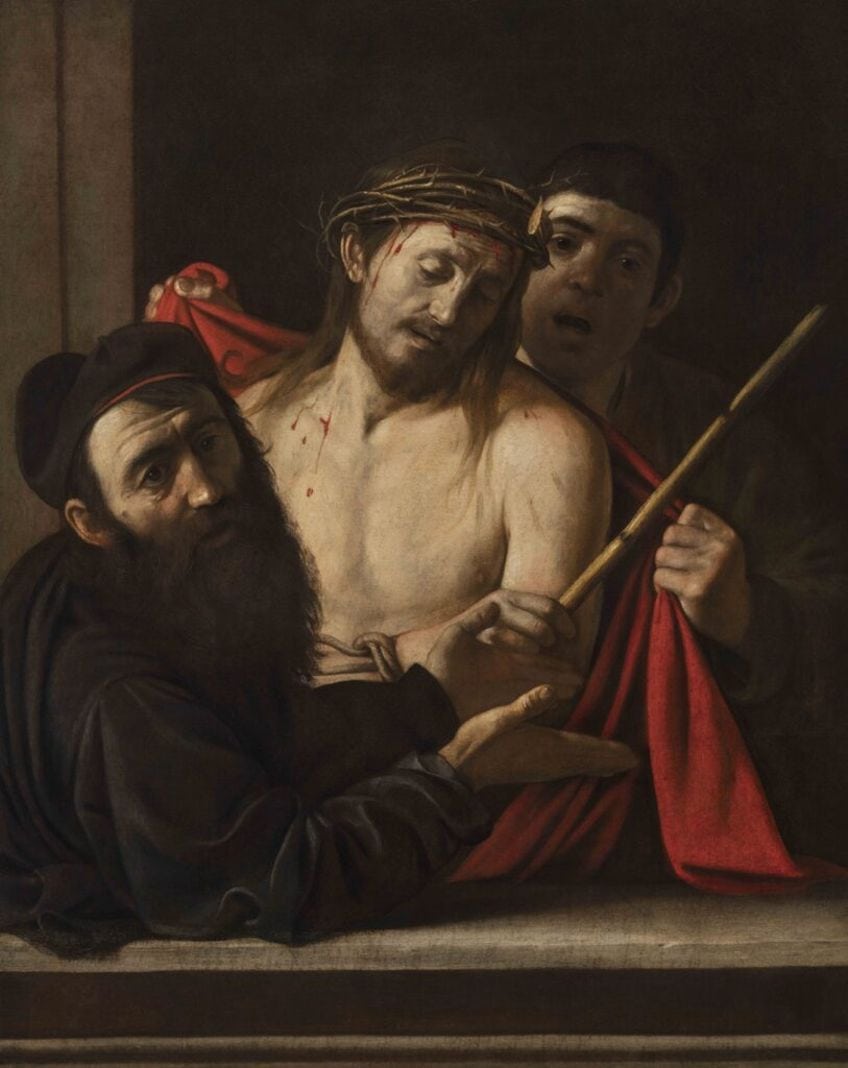
Caravaggio’s Influence on Baroque Art
Michelangelo Merisi da Caravaggio, known simply as Caravaggio, was a pivotal figure in Baroque art, whose dramatic use of light and shadow, known as chiaroscuro, and realistic depiction of human figures, constituted a break from the idealized portraits of the time. Caravaggio’s paintings are characterized by their emotional intensity and their ability to convey complex human states through powerful, realistic imagery.
His works often featured stark contrasts between darkness and light, which helped to enhance the dramatic effect of the subjects presented.
Connection to José de Ribera and Italian Baroque Master
Caravaggio’s style significantly influenced contemporary Baroque artists, including the 17th-century Spanish painter José de Ribera, who spent much of his career in Italy. Ribera, known in Italy as Lo Spagnoletto, was deeply affected by Caravaggio’s technique and subject matter, incorporating the Italian master’s tenebrism and realism into his own work. The Ecce Homo painting’s recent emergence highlights this cross-cultural influence within the Baroque movement and reinforces Caravaggio’s status not only in Italian but also in Spanish artistry.

Ribera’s admiration for Caravaggio is evident in his own depictions of religious themes and his ability to express humanistic qualities in his subjects. The connection between Ribera and Caravaggio offers insight into the transition of Baroque art across cultural and geographical boundaries, emphasizing the Italian master’s crucial role in the international art scene of the time.
The Painting’s Journey
The rediscovered work by Caravaggio underwent an eventful journey, including nearly being auctioned for a fraction of its worth before it was recognized for its true historical and artistic value. The provenance of Caravaggio’s Ecce Homo traces back to the 19th Century when the painting was likely brought to Spain during the Napoleonic invasion. It remained with a family, unnoticed for its true identity, for generations.
This historical work by Caravaggio was unexpectedly discovered in the possession of the family, who was unaware of its significance.
Export Ban and Auction
Initially misattributed, Ecce Homo was almost sold at the Ansorena Auction House in Madrid for just €1,500. Upon recognition of the work’s potential linkage to Caravaggio, the Spanish Government, specifically the Ministry of Culture, issued an export ban to prevent the painting from leaving the country. Miguel Falomir, head of the Prado Museum, played a pivotal role in halting the sale and initiating further investigation. This intervention was crucial in preserving the painting for the nation and confirming its authenticity before a new owner could acquire it from the auction.

Conservation and Exhibition
The Museo del Prado’s conservation team has meticulously restored the Caravaggio painting, preparing it for public display. Through their efforts, a significant Old Master artwork has been preserved for future generations. Restoration played a pivotal role in the revelation of the true attribution of the painting, Ecce Homo. The Museo del Prado’s conservation experts undertook a detailed analysis and treatment of the artwork. The painting’s surfaces bore layers of varnish and dirt that obscured Caravaggio’s work. Madrid’s renowned restorers meticulously removed these to unveil the painting’s original vibrancy.
The Madrid Regional Government supported the restoration, recognizing its cultural significance. The processes involved:
- Detailed analysis to ascertain the painting’s condition and materials
- Careful removal of the discolored varnish
- Cleaning to eliminate surface dirt and historical overpaint
- Application of new, protective varnish
Public Presentation and Reception
Upon restoration, Ecce Homo was introduced to the public through a Special One-Piece Exhibition. This presentation underscored the painting’s status within the Museo del Prado’s Premium Collection. Offering insights into Caravaggio’s technique and influence, the museum facilitated its appreciation as a newly rediscovered Old Master treasure within Madrid’s vibrant cultural scene. The exhibition staged:
- Dedicated display in rooms 7 and 7A of the Museo del Prado
- Educational programming to provide context and understanding
- Opportunities for public engagement through interactive displays

The discovery of the newly attributed Caravaggio painting at the Prado in Madrid marks a significant moment in art history, inviting us to reconsider the depth and breadth of Caravaggio’s artistic contributions. As scholars continue to study and analyze this newfound work, it reinforces the dynamic nature of art discovery and the ongoing dialogue between past and present interpretations. This painting’s emergence reminds us of the enduring fascination with Caravaggio’s mastery of light, shadow, and narrative depth, ensuring his legacy remains a captivating subject for generations to come.
Frequently Asked Questions
What Is the Name of the Recently Discovered Caravaggio Painting Exhibited at the Prado Museum?
The painting by Caravaggio now on display at the Prado Museum is known as Ecce Homo, which translates from Latin to Behold the Man.
When Was the Newly Identified Caravaggio Painting Found, and How Was It Authenticated?
The Caravaggio painting surfaced in 2021 when it was nearly auctioned in Madrid with a low starting price. Subsequent authentication processes by experts at the Prado Museum involving three years of restoration and evaluation confirmed it as an authentic Caravaggio.
Can Visitors View the New Caravaggio Painting at the Prado?
Visitors can view Caravaggio’s Ecce Homo at the Prado Museum in Madrid. The museum typically offers viewing hours from Monday to Saturday, 10 am to 8 pm, and on Sundays and holidays from 10 am to 7 pm, but guests should check the Prado’s official website or contact the museum directly for the most current information and possible changes in exhibition hours.
Isabella studied at the University of Cape Town in South Africa and graduated with a Bachelor of Arts majoring in English Literature & Language and Psychology. Throughout her undergraduate years, she took Art History as an additional subject and absolutely loved it. Building on from her art history knowledge that began in high school, art has always been a particular area of fascination for her. From learning about artworks previously unknown to her, or sharpening her existing understanding of specific works, the ability to continue learning within this interesting sphere excites her greatly.
Her focal points of interest in art history encompass profiling specific artists and art movements, as it is these areas where she is able to really dig deep into the rich narrative of the art world. Additionally, she particularly enjoys exploring the different artistic styles of the 20th century, as well as the important impact that female artists have had on the development of art history.
Learn more about Isabella Meyer and the Art in Context Team.
Cite this Article
Isabella, Meyer, “Newly Discovered Caravaggio Painting at the Prado in Madrid.” Art in Context. May 17, 2024. URL: https://artincontext.org/newly-discovered-caravaggio-painting-at-the-prado-in-madrid/
Meyer, I. (2024, 17 May). Newly Discovered Caravaggio Painting at the Prado in Madrid. Art in Context. https://artincontext.org/newly-discovered-caravaggio-painting-at-the-prado-in-madrid/
Meyer, Isabella. “Newly Discovered Caravaggio Painting at the Prado in Madrid.” Art in Context, May 17, 2024. https://artincontext.org/newly-discovered-caravaggio-painting-at-the-prado-in-madrid/.


